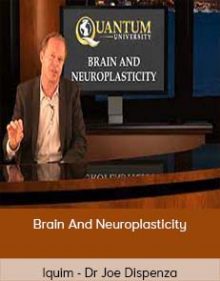Dark Matter, Dark Energy – The Dark Side Of The Universe
Original price was: $214.95.$52.00Current price is: $52.00.
Scientists call these invisible components dark matter and dark energy; “dark” because these phenomena do not emit light, not because we are not learning more and more about them.
- Description
- Reviews (0)
- More Products
Description
Dark Matter, Dark Energy – The Dark Side Of The Universe

There’s more to the universe than meets the eye—a lot more. In recent years, scientists have discovered that 95% of the contents of the cosmos are invisible to our current methods of direct detection. Yet something is holding galaxies and galaxy clusters together, and something else is causing space to fly apart.
Hide Full Description
Scientists call these invisible components dark matter and dark energy; “dark” because these phenomena do not emit light, not because we are not learning more and more about them. In fact, dark matter and dark energy are the most eagerly studied subjects in astronomy and particle physics today.
If and when we discover this matter, it will further validate the “standard model” of physics which, so far, is the best description of how our universe works; if we cannot find this matter, or if it does not exist, then we will completely need to rethink the current “standard model” theory.
Join the exciting search for these mysterious phenomena in Dark Matter, Dark Energy: The Dark Side of the Universe, a mind-expanding, 24-lecture course taught by Dr. Sean Carroll, a theoretical physicist with a profound knowledge of the field. Starting with the early 20th-century work of Albert Einstein in theoretical physics and Edwin Hubble in observational astronomy, Dr. Carroll takes you through the key concepts of this revolutionary view of an expanding universe, concepts which have brought us—for the first time in history—to the brink of knowing what the universe is made of.
Welcome to the Dark Side
Everything you see with your eyes and with powerful instruments—stars, planets, galaxies, dust, and gas—and everything that you think of as atom-based matter is only 5% of what we now know exists. The rest is what Dr. Carroll calls the “dark sector,” which consists of the following:
Dark matter: First proposed in the 1930s, the idea that there is missing mass influencing the behavior of galaxies began to look more and more likely from the 1970s on. We know that it is matter because we can detect its gravitational influence on visible matter, but we cannot see it. An inventory of the distribution of dark matter throughout space shows that it constitutes 25% of the energy density of the universe.
Dark energy: The greatest discoveries are the unexpected ones, which was the case in the late 1990s when two teams of astronomers competing to measure the rate at which the expansion of the universe is slowing down (as virtually everyone thought it must be) discovered that it is speeding up instead. A previously unknown, all-pervasive dark energy must be at work, representing 70% of the energy density of the universe.
Together, dark matter and dark energy account for all but a tiny fraction of everything there is; the ordinary matter that is left over is like the seasoning on the main dish. The story of how we arrived at this startling cosmic recipe is an absorbing drama that takes you through the breakthrough discoveries in astronomy and physics since the turn of the 20th century.
Concept by concept, Dark Matter, Dark Energy gives you the tools to appreciate this subject in depth. Dr. Carroll explains why scientists believe we live in a smooth, expanding universe that originated in a hot, dense state called the big bang.
You investigate the features of the infant universe that led to the large-scale structure we observe today, explore the standard model of particle physics and see how it provides the framework for understanding the interaction of all matter and radiation, and come to understand why dark matter and dark energy are logical consequences of a range of scientific theories and observations and how together they complete a grand picture of the universe.
Deduce the Existence of the Dark Sector
Several significant clues disclose the existence of dark matter and dark energy. In the case of dark matter, we have the evidence of:
Galaxy dynamics: The motions of the stars in galaxies and galaxies within clusters indicate that there is far more matter than is implied by visible stars and gas.
Echoes of the big bang: Variations in the leftover radiation from the big bang demonstrate that there must be dark matter pulling the ordinary matter we see.
Dark matter is clear to see compared to dark energy, which reveals itself subtly but unmistakably through:
Exploding stars: Type Ia supernovae provide a standard candle to measure the distances to faraway galaxies. By combining this information with redshift (which measures how fast a galaxy recedes), astronomers conclude that something is causing galaxies to recede at a faster and faster velocity.
Geometry of space: Observations that space is “flat” (with neither positive nor negative curvature) imply a total energy density for the universe that is stunningly consistent with the dark energy hypothesis.
Each of these techniques deduces the existence of dark matter or dark energy from the gravitational fields they cause. But what if our theory of gravity is faulty? Could adjustments to Einstein’s general theory of relativity, which forms our modern understanding of gravity, do away with the need for the dark sector?
You explore a theory called Modified Newtonian Dynamics, which successfully dispenses with dark matter in individual galaxies. This theory fails, however, when applied to clusters and has nothing to say about the expansion of the universe.
“It is impossible, in principle, to think of a theory in this day and age that will completely do away with dark matter,” says Dr. Carroll, pointing in particular to a convincing piece of evidence from the aftermath of the collision of two galaxies.
Known as the Bullet Cluster, it shows a central region of ordinary matter (evident through telltale x-ray emissions), on either side of which are far more extensive clouds of what can only be dark matter, disclosed by gravitational lensing.
Explaining away dark energy is similarly difficult, because it requires revising the fundamental equation of general relativity. “The problem is that this equation of Einstein’s is actually quite remarkable,” says Dr. Carroll. “If you try to mess with it just a little bit, you break it.”
The overriding question remains: What are dark matter and dark energy? We do not yet know for certain, but physicists have come up with an array of creative ideas and ways to test them. Dark Matter, Dark Energy covers the most promising proposals and looks ahead to experiments that will dramatically improve our understanding of the dark sector.
Take a Voyage of Scientific Discovery
Dr. Carroll has a knack for explaining the latest complex picture of the universe in easy-to-follow terms—a skill honed by his more than 250 scientific seminars, colloquia, educational discussions, and popular talks. Relaxed, eloquent, wryly funny, and brimming with ideas, he has received the Graduate Student Council Teaching Award from MIT for his course on general relativity, as well as research grants from NASA, the U.S. Department of Energy, and the National Science Foundation.
With his expert guidance, your previously held ideas about the fate (and possibly the origin) of the universe will be altered permanently. A rich voyage of scientific discovery, Dark Matter, Dark Energy provides you with a comprehensive look at these two mysterious phenomena—and their startling implications for our understanding of the universe.
Dark Matter, Dark Energy – The Dark Side Of The Universe on sensecourse.info
Be the first to review “Dark Matter, Dark Energy – The Dark Side Of The Universe”
You must be logged in to post a review.
-
Iquim – Dr Joe Dispenza – Brain And Neuroplasticity
Original price was: $450.00.$90.00Current price is: $90.00. Buy now -
Kris Hawkins – Virtual Assistant Master Class for Real Estate Investors
Original price was: $197.00.$55.00Current price is: $55.00. Buy now -
-
-
John Crane – Time, Price & Pattern
Original price was: $197.00.$47.00Current price is: $47.00. Buy now -
Don Miller – Chronicles Of A Million Dollar Trader
Original price was: $21.59.$12.00Current price is: $12.00. Buy now
























Reviews
There are no reviews yet.